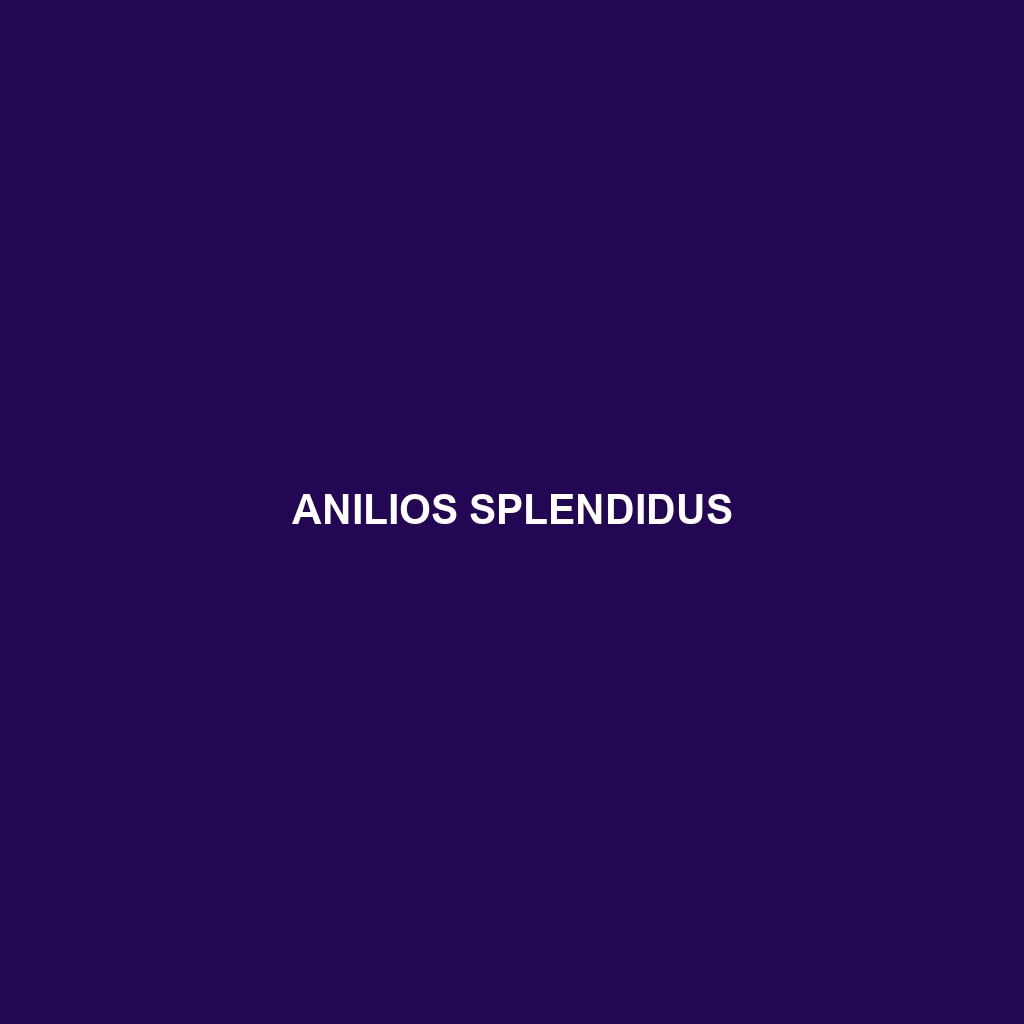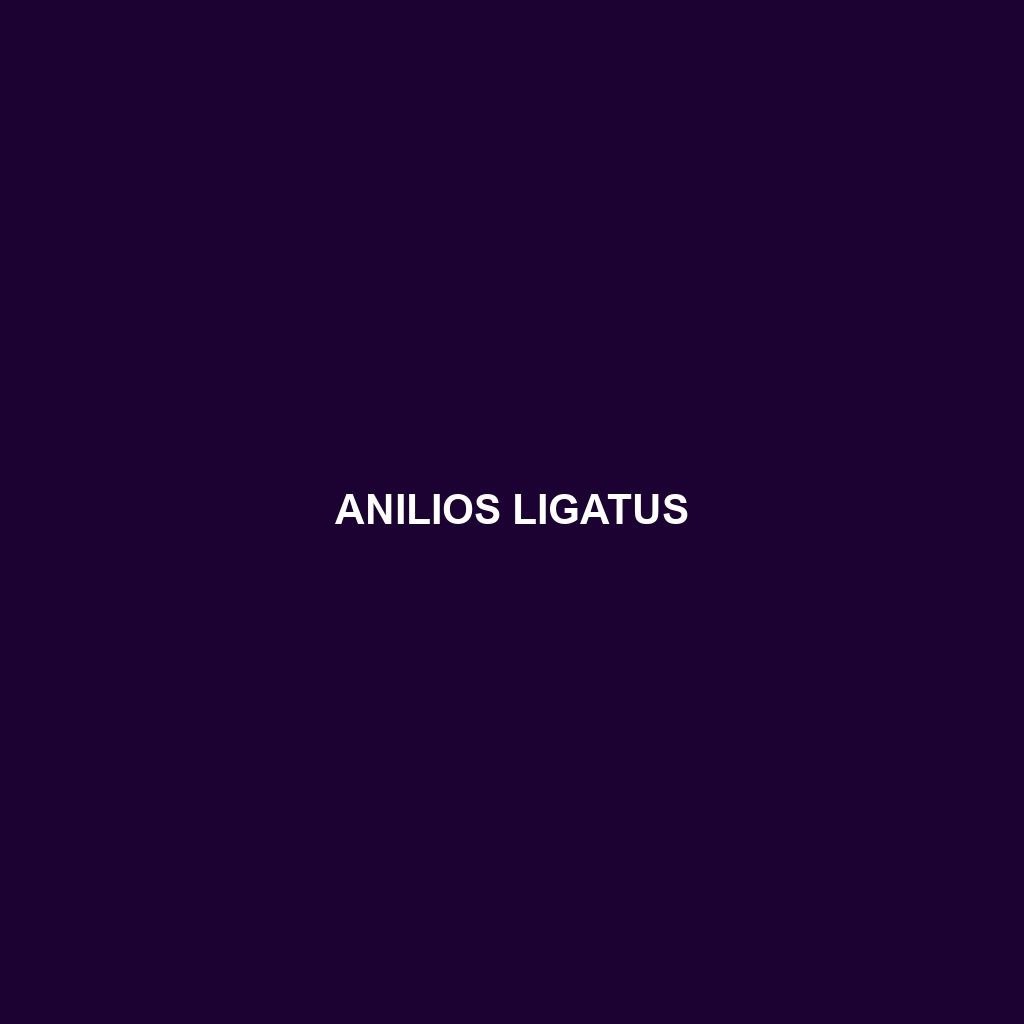-

Anilios proximus
Discover the Anilios proximus, a slender, nocturnal snake from Papua New Guinea, known for its distinctive brown and cream coloration and small, vestigial eyes. This secretive species thrives in moist habitats, primarily feeding on small invertebrates, while playing a vital role in its ecosystem by controlling prey populations.
-

Anilios robertsi
Discover the unique Anilios robertsi, or Roberts’ Blind Snake, a nocturnal, fossorial species thriving in Australia’s arid woodlands with a smooth, glossy appearance and a diet primarily consisting of small invertebrates like ants and termites. This small, legless snake plays a vital role in its ecosystem by aerating soil and controlling insect populations, making it…
-

Anilios silvia
Discover the Anilios silvia, a fascinating blind snake native to the tropical rainforests of Australia. Ranging from 30 to 100 centimeters, this nocturnal and fossorial species plays a crucial role in controlling insect populations and is currently listed as vulnerable due to habitat destruction.
-

Anilios splendidus
Discover the splendid burrowing snake, Anilios splendidus, a nocturnal serpent from the tropical rainforests of northeastern Australia, known for its striking dark and light patterned body, burrowing behavior, and diet of small invertebrates. This vulnerable species plays a crucial role in maintaining soil health and ecosystem balance.
-

Anilios obtusifrons
Discover the Anilios obtusifrons, a medium-sized, nocturnal snake native to tropical Australia, known for its smooth, camouflaged skin and burrowing behavior. Feeding primarily on small invertebrates, this non-aggressive species plays a crucial role in maintaining soil health and ecosystem balance.
-

Anilios pinguis
Discover the Anilios pinguis, or smooth snake, a nocturnal species native to northern Queensland’s tropical forests. With a cylindrical body averaging 1 meter in length, this docile predator primarily feeds on small invertebrates and plays a crucial role in maintaining forest ecosystem balance.
-

Anilios nigrescens
Discover the Anilios nigrescens, or blackish blind snake, indigenous to northern Australia and New Guinea. This fossorial species features a sleek, dark appearance, small vestigial eyes, and plays a vital role in controlling insect populations through its diet of small invertebrates.
-

Anilios nema
Introducing the Anilios nema, a unique, nocturnal snake characterized by its elongated body, ranging from 40 to 70 centimeters, and distinct brown or gray coloration with faint bands for camouflage. Found in the moist, tropical forests of Australia, this vulnerable species plays a crucial role in its ecosystem by controlling invertebrate populations and maintaining soil…
-

Anilios ligatus
Discover the unique Anilios ligatus, or banded blind snake, native to the tropical rainforests of northern Australia. This nocturnal, ovoviviparous species features a cylindrical, dark banded body measuring 30 to 50 centimeters, and plays a vital role in maintaining soil health and insect populations.
Search
Popular Posts
-
Lygosoma corpulentum
Discover the Lygosoma corpulentum, or fat skink, a robust insectivorous lizard native to Southeast Asia’s moist tropical rainforests and varying habitats. With a stocky body, impressive camouflage, and remarkable adaptability, this ovoviviparous species plays a crucial role in maintaining ecological balance.
-
Lygosoma boehmei
Lygosoma boehmei is a slender, nocturnal insectivore found in humid tropical rainforests and savannas of Southeast Asia, exhibiting a smooth, camouflaging texture and remarkable burrowing abilities. This vulnerable species plays a crucial role in its ecosystem by controlling insect populations and serving as prey for larger predators.
-
Lygosoma bampfyldei
Lygosoma bampfyldei, commonly found in tropical and subtropical regions, is a moderately sized lizard measuring 15 to 25 cm, known for its elongated body and glossy, camouflage coloration. This insectivorous species thrives in moist habitats and plays a vital role in maintaining ecological balance by controlling insect populations.
Categories
Tags
animal adaptations (924) animal behavior (5000) animal reproduction (865) behavior (920) biodiversity (7853) conservation (1670) conservation efforts (1778) conservation status (5748) diet (2104) ecological balance (2087) ecological role (1952) ecosystem (1469) ecosystem role (2901) endangered species (2514) habitat (3280) habitat conservation (1136) Habitat Destruction (1421) habitat loss (3385) herpetology (870) insectivorous reptiles (948) IUCN Red List (1971) lizard behavior (881) lizard diet (944) lizard reproduction (1101) nocturnal animals (2754) nocturnal behavior (2592) nocturnal reptiles (1061) physical characteristics (2058) predator-prey relationships (927) reproduction (2890) reptile behavior (1037) reptile conservation (1348) reptile reproduction (1069) rodent species (1325) seed dispersal (2145) Seed Disperser (979) small mammals (1168) snake behavior (952) snake diet (1061) snake reproduction (1129) tropical forests (948) Vulnerable Species (4926) wildlife (2511) wildlife conservation (5355) wildlife protection (1008)




